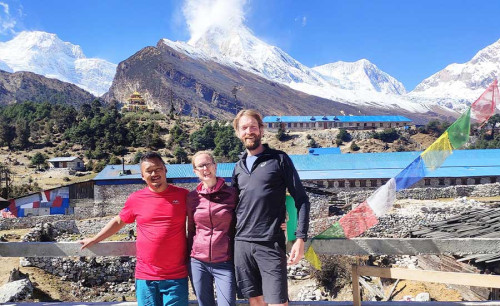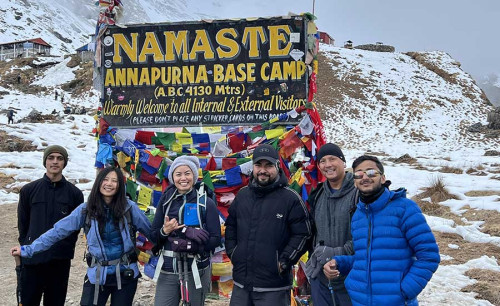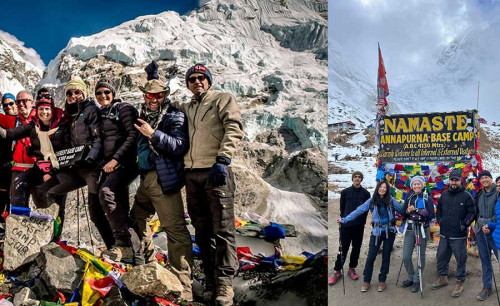Hike to the Tiger’s Nest Monastery: Essential Tips
Published On : 9th Oct, 2025 By Himalayan Dream Team

If Machu Picchu is considered the pinnacle of cultural trekking destinations, then Bhutan's Tiger’s Nest Monastery is undoubtedly a close contender. Perched 700 meters up a nearly vertical cliff and overlooking the breathtaking Paro Valley, this enchanting monastery is Bhutan's most iconic landmark. The journey to this sacred site offers trekkers a blend of physical challenge and spiritual enrichment, making it a must-visit for adventurers and culture enthusiasts alike.
Most visitors to Bhutan arrive at Paro, home to the country’s sole international airport. This quaint town, with a population of approximately 70,000, stretches across a picturesque valley over 20 miles long. The serene environment of Paro provides an ideal starting point for the trek to Tiger's Nest Monastery. For those planning this hike, it's essential to prepare adequately: wear comfortable trekking shoes, carry enough water, and acclimate to the altitude. Embark on this unforgettable journey to experience the mystique and majesty of one of Bhutan’s most revered sites.
1. Adjust Your Pace for Altitude
The Paro Valley, situated at an elevation of over 2,000 meters, serves as the starting point for your trek to the Tiger's Nest Monastery. The hike begins about a 20-minute drive from the valley and ascends via a winding switchback road to the base camp at 2,700 meters. The trek to the monastery, perched at 3,200 meters, spans approximately three miles. Given these elevations, it's crucial to adjust your pace accordingly due to the lower oxygen levels—about 80% of sea level in the valley and 70% at the monastery. This significant drop can lead to altitude sickness, particularly if you embark on the hike immediately after arriving in Bhutan. To mitigate this risk, plan your hike for later in your trip, allowing ample time to acclimatize to the altitude and ensure a more comfortable trekking experience.
2. Optimal Timing for Your Hike
Timing your hike to the Tiger's Nest Monastery is essential for an enjoyable experience. This popular destination attracts many tourists, often aged 50-70, resulting in slow-moving traffic on the trail. Additionally, donkeys are available for hire to carry visitors partway up, adding to the congestion and stirring up dust. To avoid these crowds, consider starting your hike early in the morning or later in the afternoon. However, keep in mind that the monastery closes at 4:30 pm, so ensure you begin your hike early enough to allow sufficient time to explore the interior of this iconic landmark. By planning your hike strategically, you can enjoy a more serene and uninterrupted journey to the monastery.
3. Best Photography Conditions
For those looking to capture the best photographs of the Tiger's Nest Monastery, timing and positioning are key. The monastery is situated on an East-West cliff face, which affects the lighting throughout the day. In the morning, the sun rises behind the monastery, casting a shadow and muting the colors. By the afternoon, the sun illuminates the monastery directly, highlighting its vibrant reds and golds. Therefore, the best time for photography is in the afternoon when the sunlight enhances the beauty of the monastery. This timing ensures you capture the most stunning and vivid images of this breathtaking site.
4. Navigating the Trail and Shortcuts
As you embark on the hike to the Tiger's Nest Monastery, the trail offers both challenges and stunning rewards. From the valley, the monastery appears as a small white spot on the rock face. As you ascend, the forests occasionally open up, providing inspiring glimpses of the Tiger's Nest, motivating even the most weary hikers. The trail is steep right from the car park, but there are a couple of shortcuts that, while steeper, are less crowded. The first shortcut, located above the initial waterfall and prayer wheel, is used by staff at the halfway cafeteria and is suitable for very fit hikers. Other shortcuts are more moderate and worth exploring to save time and avoid congestion.
5. Allocate Enough Time
Allocating sufficient time for your hike to the Tiger's Nest Monastery is essential for a fulfilling experience. Guides typically estimate around three hours for the ascent and two hours for the descent, though this can vary based on individual pace. On a recent trip, the hike was completed in 2 ½ hours, including a stop at the halfway cafeteria and several photo breaks, but without entering the monastery. If you plan to explore the inside of the monastery, allow an additional hour to fully appreciate its interior and the surrounding views. Proper time management ensures you can enjoy the hike and the monastery without feeling rushed.
6. Refresh at the Half-Way Point
Halfway to the Tiger's Nest Monastery, you'll find a small cafeteria offering a range of drinks and one of the best early views of the monastery. This spot provides an ideal opportunity to pause, refresh, and soak in the scenery. If you start your hike early, try not to linger too long to maintain your lead over the crowds. From the cafeteria, the trail continues steeply upward, offering frequent views of the monastery at nearly every turn. You'll reach a ridge opposite the monastery, descend steep stone stairs, and then cross over for a short, steep climb to the monastery entrance. These steps can be tricky, especially in wet conditions, so ensure you wear shoes with good grip for safety.
7. Respect Local Customs
When visiting the Tiger's Nest Monastery, it's important to respect local customs. Inside the monastery, cameras and shoes are prohibited. Ensure you wear socks, as the floors can be cold and dirty. Bhutanese mythology is taken literally, and your guide may share fascinating yet surprising beliefs about flying tigers and other legends. Respecting these customs and listening to these stories enhances your experience and understanding of the cultural significance of the monastery.
8. Careful on the Descent
Descending from the Tiger's Nest Monastery presents its own challenges. The steep steps and loose dust make the trail slippery, requiring careful navigation. Opt for the hiker-only shortcuts on the way down for a safer route. For those seeking a bit more adventure, consider taking the staff route down behind the cafeteria for a secluded, knee-strengthening path. This path offers a quieter and more challenging descent, providing an alternative experience for the more adventurous hikers.
Embark on your Himalayan adventure with Himalayan Dream Team Treks & Tours Pvt. Ltd. Whether you choose the serene trails of Bhutan or the lively routes of Nepal, we guarantee an unforgettable journey through these majestic lands.
Here are different alternative programs for Tiger's Nest trips:
Best of Nepal and Bhutan: 10-Day Tour 2024/2025 - Himalayan Dream Team t
Samtengang Trek Bhutan | Serene 10-Day Trek & Cultural Tour 2024/2025 (himalayandream.team)
Bumthang Trek and Highlights of Bhutan Tour. All-Inclusive 2024/2025 | Himalayan Dream Team
For more information on our Bhutan adventures, visit Himalayan Dream Team Treks & Tours Pvt. Ltd.
Recent Posts

2nd Dec, 2025

24th Nov, 2025

21st Nov, 2025

10th Nov, 2025

9th Nov, 2025

25th Oct, 2025

22nd Oct, 2025

17th Oct, 2025

17th Oct, 2025

13th Oct, 2025





